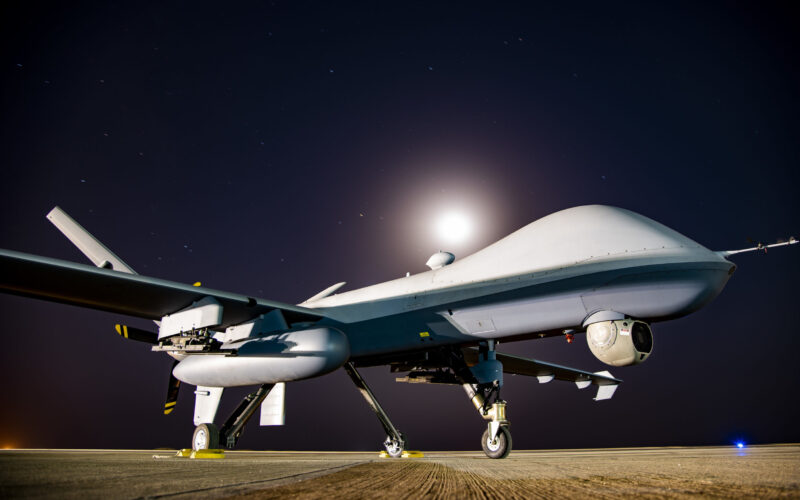The US military has landed an MQ-9 Reaper drone on a dirt strip for the first time, liberating it from the traditional reliance on paved runways.
The Reaper, an unmanned aerial vehicle (UAV) primarily used by the United States Air Force (USAF), is known for its long-endurance, high-altitude surveillance capabilities and is often referred to as the first “hunter-killer” UAV.
A remotely piloted aircraft has traditionally taken off and landed via line of sight of antennas and was manually flown by aircrew members from a Ground Control Station (GCS).
The USAF had previously demonstrated the drone’s evolving capabilities during a set of drills in rural Wyoming from April 30 to May 2, 2023, where the Reaper successfully landed on a remote highway.
However, this latest achievement, which took place during Air Force Special Operations Command (AFSOC) training exercises near Fort Stockton in western Texas, is part of a broader effort by the US military to adapt to the changing landscape of warfare and explore unconventional runways to protect American interests globally.
“Team of aircrew, maintainers, and special tactics Airmen have proven the Reaper can operate anywhere in the world and is no longer beholden to the ‘leash’,” said Lt. Col. Brian Flanigan, 2nd SOS Director of Operations, in a statement.
Additionally, the USAF has delved into the roles that UAVs play in missions. Under the initiative ‘Reaper Express’, a travel pod was attached to the drone, enabling it to resupply soldiers at a remote landing zone.
Although the Reaper could not carry a significant load, the pod was tested to contain the essential items that can be crucial in times of need, such as critical aircraft parts for an isolated airfield or blood supplies for casualties following a base attack.
“This capability will be critical in ‘tomorrow’s fight’ and nests perfectly with the Air Force’s Agile Combat Employment concept that focuses on smaller footprints, distributed operations, and increased survivability while generating combat power,” stated Flanigan.

